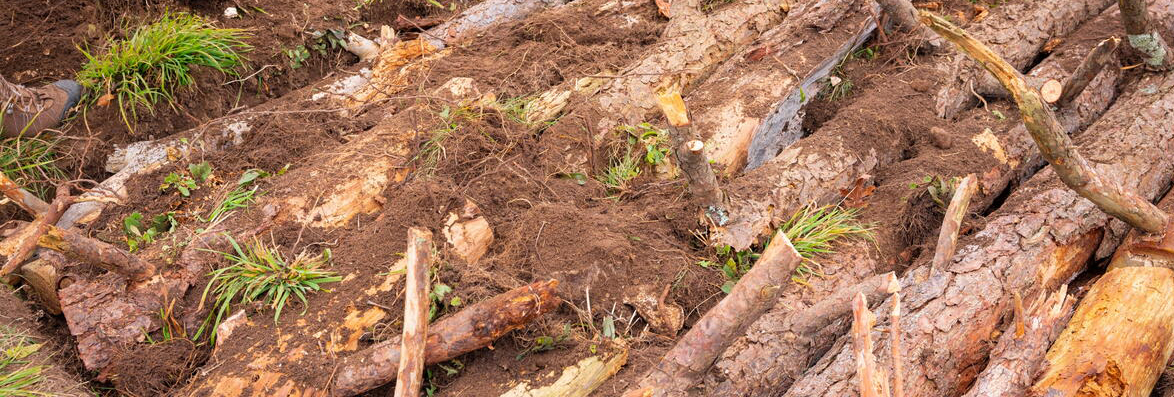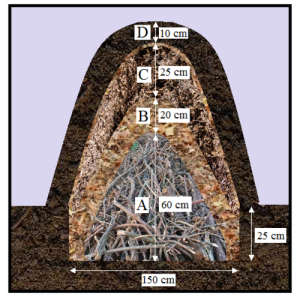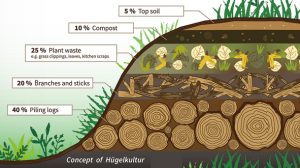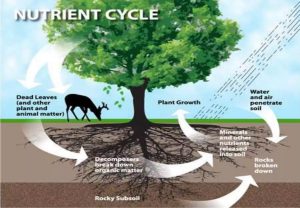What is Hügelkultur?
Hügelkultur (usually transliterated into English as “hugelkultur”) is a method of gardening that has been used for centuries in Eastern Europe and Germany, often as part of a broader permaculture system. Hügelkultur is a mound bed or mound culture. It is a horticultural technique where a mound constructed from decaying wood debris and other compostable biomass plant materials is later planted as a raised bed. Considered a permaculture practice, advocates claim that the technique helps to improve soil fertility, water retention, and soil warming, thus benefitting plants grown on or near such mounds.
Hügelkultur is a centuries-old being a traditional way of building a garden bed from rotten logs and plant debris. These mound shapes are created by marking out an area for a raised bed, clearing the land, and then heaping up woody material (ideally already partially rotted) topped with compost and soil.
Some Hügelkultur practitioners build their beds directly on top of the earth; others dig a trench roughly 12 to 16 inches deep, some even deeper. Often, the farmer or gardener will remove and put aside several square feet of turf, construct the mound, then invert the turf on top for a no-waste layer of topsoil.

The heart of the Hügelkultur bed is based on logs and large branches laid down as the foundation of the mound. They provide both physical structure for the bed and a steady supply of moisture and nutrients to the plants growing above. Other types of woody biomass—smaller branches, brush, sticks, twigs, wood chips, and sawdust—can fill in the gaps before adding additional layers to bulk it up and insulate the core. These layers can consist of household compost, manure, straw, leaf litter and grass clippings. Allowing Hügelkultur beds to “cure” for a few months before planting will yield better results.
 Here is a schematic image of a Hügelkultur mound. (A = wood with soil, B = leaves (possibly turf), C = compost, D = garden soil (not shown is the top layer of mulch to protect against erosion and drying out)) Source: Wikipedia
Here is a schematic image of a Hügelkultur mound. (A = wood with soil, B = leaves (possibly turf), C = compost, D = garden soil (not shown is the top layer of mulch to protect against erosion and drying out)) Source: Wikipedia
Depending on the type of wood used and the size of the bed, a Hügelkultur bed when carefully constructed will sustain itself for up to 20 years, with no more work than that required by an ordinary backyard plot. Worms, fungi, microorganisms, and beneficial bacteria go to work as the wood breaks down, improving soil fertility and delivering nutrients to nourish the plant roots. Since decomposition also creates heat, Hügelkultur extends the growing season, a perk that avid gardeners are sure to appreciate.
 The woody materials that form the core also retain, then release, rainwater. Essentially, they act as a sponge, and such an effective one that after the first year or so, gardeners might never need to irrigate the bed. Hügelkultur is a smart solution for drought-prone zones and can even work in arid climates.
The woody materials that form the core also retain, then release, rainwater. Essentially, they act as a sponge, and such an effective one that after the first year or so, gardeners might never need to irrigate the bed. Hügelkultur is a smart solution for drought-prone zones and can even work in arid climates.
 Do you remember learning about nutrient cycling in Earth Science class in school? Here is a little refresher. Nutrient cycling, sometimes called ecological recycling, refers to the exchange of organic and inorganic matter between living and nonliving organisms. A Hügelkultur ecosystem is efficient at recycling carbon, nitrogen, phosphorus, sulfur, and other components. Once you as the gardener sets the natural process in motion, the beds will eventually benefit from benign neglect.
Do you remember learning about nutrient cycling in Earth Science class in school? Here is a little refresher. Nutrient cycling, sometimes called ecological recycling, refers to the exchange of organic and inorganic matter between living and nonliving organisms. A Hügelkultur ecosystem is efficient at recycling carbon, nitrogen, phosphorus, sulfur, and other components. Once you as the gardener sets the natural process in motion, the beds will eventually benefit from benign neglect.
Hügelkultur is said to replicate the natural process of decomposition that occurs on forest floors, however in natural ecosystems wood would be present at the soil surface. Trees that fall in a forest often become nurse logs decaying and providing ecological facilitation to seedlings. As the wood decays, its porosity increases, allowing it to store water like a sponge. The water is slowly released back into the environment, benefiting nearby plants.
